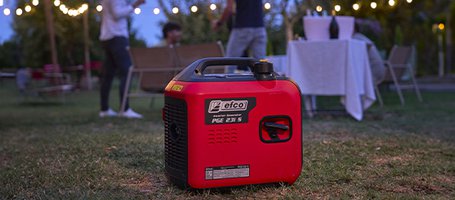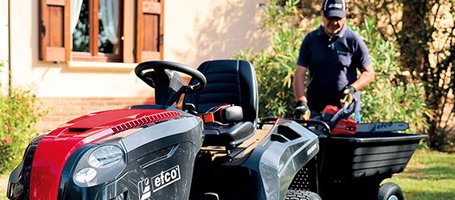The centrifugal water pump is the most common and versatile type of pump. How does it work? It draws a liquid (usually water) through a suction nozzle at the end of a pipe which is immersed into the water source. An impeller driven by an internal combustion engine sets the fluid in rotation and expels it from an outlet at high pressure, which enables the fluid to overcome a height difference and/or travel a certain distance.
When it comes to water quality, the point of supply makes the difference and here we will talk about using a water pump for dirty water.
Self-priming water pumps: how do they work?
Before you start a water pump, the suction pipe is empty—or rather, full of air—so it needs to be primed. In order to work, the water pump actually needs “hydraulic continuity”, with no interruptions in the flow due to trapped air. Priming consists of filling the suction pipe and body of the water pump with water until the impeller is submerged, thus eliminating air from its circuit.
If the water pump is self-priming, such as the MP 3000 by Efco, priming needn’t be done manually. Simply fill the pump body with water via the special filling hole and, when the water pump is started, the air in the suction pipe will be sucked in and expelled from the outlet pipe. Once air is completely expelled and the suction pipe and body are filled with liquid, the water pump is primed and can start operating normally.
Self-priming water pump for dirty water
A water pump is used to transport water for emptying, filling, siphoning and more. The water can come from the mains supply, or it can be rainwater or even chlorinated water from a swimming pool. In these situations you are dealing with clean water, but that’s not always the case.
Although clean water contains some tiny impurities, dirty water contains a variable amount of coarse materials (such as twigs, leaves, gravel, stones and pieces of plastic) as well as small particles (sand of varying grain size, silt, clay etc.).
Muddy water is typically found in ditches and excavations in soil for small building or landscaping works in the garden or in countryside. Water that floods cellars and garages during storms is also dirty, as is that found in garden ponds (think of the bottom covered with silt and gravel or soil for aquatic plants).
Even swimming pools can be contaminated with dirt if they are not kept clean during the summer season or not covered over in winter with a suitable tarpaulin. In any case, whether it is in-ground or above-ground, if you want to empty your pool for maintenance, a water pump is the right solution.
For using a water pump with dirty water, the suction pipe (which draws the water you want to drain, discharge etc.) must be equipped with a filter (standard on the Efco MP 3000) that is well secured with a clamp. That will prevent larger foreign objects from entering the pump and damaging the impeller.
If coarse materials are blocked by a filter on the suction pipe of the water pump, substances that cloud the water (such as sand and silt) can circulate inside the water pump without clogging it. To avoid damage, however, the grains must have a maximum diameter of 5 mm. On the market you can also find water pumps for dirty water suitable for intensive use, i.e. For use with large quantities of water and voluminous solid particles such as gravel.
In order for a self-priming water pump for dirty water to work effectively, the filter and connected suction pipe must:
-
Be completely immersed, perpendicular to the water (the pipe must not be kinked), away from surfaces and obstacles.
-
Not protrude from the water, whether partially or wholly, i.e. the suction pipe must be full of water and the water pump must also be primed correctly, as mentioned above.
-
Not rest on the bottom or walls of the water source: for example, if it is a ditch, check that the walls do not form steps on which the filter may become stuck (it is easy to miss this if the water is dirty).


How to use a water pump with dirty water? In addition to paying particular attention to the filter and the suction pipe, follow these guidelines, which apply even if using a water pump with clean water:
-
Choose a rigid suction pipe rather than a collapsible one (spiral tube), of suitable diameter to fit the suction connection on the pump.
-
Check the tightness of the connections between the pipes (suction and outlet) and the connections on the water pump: i.e. ensure that the clamps are tight.
-
Connect the filter to the suction pipe with a tightly closed clamp.
-
Place the water pump as close as possible to the water, in a stable position and so that it can work efficiently (see our instructions above on the filter and suction pipe).
-
Fill the water pump completely with water by priming it: starting it without doing this can damage the engine. If the water pump does not dispense water immediately or takes a few minutes to do so, it means that it has not been primed properly, or that air is entering the hose-fitting connections.
In the garden just as in the countryside, the most common use—but not the only use, as we have seen—of self-priming water pumps is irrigation, specifically drawing water from ditches, streams and rainwater collection tanks. Watering plants is vital, especially in summer to provide protection from heat for the vegetable patch, ornamental plants and lawn (here are some jobs to do in the garden in summer).









